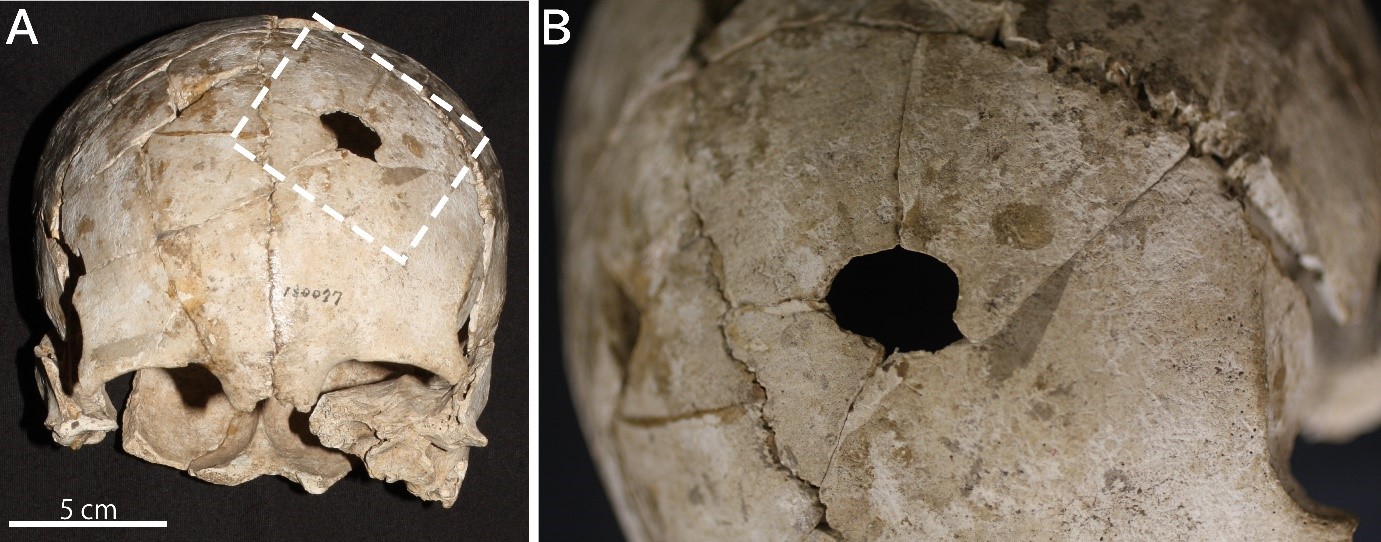DATE2024.04.04 #Press Releases
Discovery of a skull of the Jomon period stabbed destructively
-A new material for exploring the nature of violence in the Jomon period
The University of Tokyo
Summary of Presentations
A hole created by a sharp stabbing tool on a skull of the Jomon period excavated in Okayama Prefecture in 1920 was found by Rikiya Hirano, a graduate student in the Department of Biological Sciences, School of Science, the University of Tokyo, and Prof. Yousuke Kaifu of the University Museum, the University of Tokyo.
This skull belonged to an adult woman from the Early Jomon period (about 6,000 years ago). We analyzed the hole macroscopically and using CT images based on a forensic anthropological method and observed typical features made by a stabbing tool (or by gunshot if modern times) (Figure). We also examined three skulls that were previously reported to have holes by weapons and noted circular or oval-shaped holes made from multiple directions on some of these Jomon skull. We pointed out the need to consider the possibility of ritualistic destruction of dead bodies in addition to the violence that has been discussed before.
This discovery suggests that there are other unreported cases of human-induced trauma in the existing collection of the Jomon skeletal remains and serves as a stepping stone for the research aimed at exploring the violence in the Jomon period.

Figure: The oval hole in the left frontal bone of the Hashima 6・7a skull (A) and its close-up (B). The radiating fractures are one of the features characteristic of human-induced trauma.
For more information, please visit the website of the University Museum, The University of Tokyo (in Japanese).
Journals
-
Journal name Anthropological Science (Japanese Series)Title of paper


